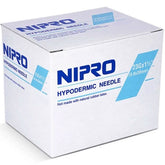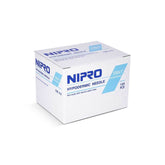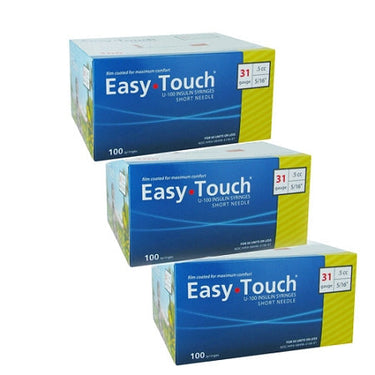When visiting a healthcare professional, you’ve likely encountered a needle for a blood draw or injection. These procedures are common, whether for diagnostic tests, vaccinations, or medication administration. In most cases, nurses and doctors choose to access your veins rather than arteries. While both are essential parts of your circulatory system, the choice of veins is deliberate and rooted in anatomy and safety.
Let's explore why healthcare professionals prefer to use veins for injections and blood draws, breaking down the key differences between veins and arteries and explaining the practical reasons behind this choice. We will also touch on special cases where arteries are accessed and why this requires more caution and expertise. By the end, you’ll have a clearer understanding of why veins are safer and more comfortable for routine medical procedures.
The Anatomy of Veins vs. Arteries
Veins and arteries may seem similar since both carry blood, but their structure and function are quite different. Arteries transport oxygen-rich blood from the heart to the rest of the body. To handle this task, they have thick, muscular walls capable of withstanding the high pressure exerted by the heart’s pumping action. Arteries are generally deeper within the body, protected by layers of tissue and muscle, which makes them less accessible for injections and blood draws. Their depth and high-pressure system make them better suited for delivering oxygen and nutrients efficiently, but not for routine medical procedures.
In contrast, veins carry deoxygenated blood back to the heart. Because the pressure in veins is much lower, their walls are thinner and more flexible. Veins also tend to be closer to the surface of the skin, making them more accessible for healthcare providers. For these reasons, veins are ideal for medical procedures such as drawing blood or administering medication, as the lower pressure and surface location reduce the risk of complications. These anatomical differences are crucial in determining why veins are used far more frequently than arteries in clinical settings.
The Reasons Behind Choosing Veins
One of the primary reasons veins are chosen over arteries is safety. The lower pressure in veins significantly reduces the risk of complications such as bleeding. If a vein is accidentally punctured, the body can usually handle the leak without much difficulty, as the blood pressure in veins is low. On the other hand, arteries operate under much higher pressure, and puncturing an artery can lead to rapid blood loss, which can be difficult to control. For routine procedures, minimizing risk is a priority, and veins offer a safer option.
Beyond safety, the choice of veins is also tied to the efficiency of drug delivery. When medications are injected into a vein, they travel directly to the heart and are quickly distributed throughout the body. This allows for fast and effective delivery of the medication. Arterial injection, on the other hand, could lead to complications such as tissue damage or improper distribution of the drug, making it unsuitable for most medical procedures. Veins, with their lower pressure and proximity to the surface, provide a reliable and effective route for administering treatments.
Situations Where Arteries Are Used
Though veins are the preferred route for most procedures, there are specific situations where arteries are accessed, often for more specialized tests or treatments. One such example is an arterial blood gas (ABG) test, which measures the levels of oxygen, carbon dioxide, and pH in the blood. This test requires arterial blood because the oxygen and carbon dioxide levels in arterial blood more accurately reflect the body’s lung and kidney functions. The arterial blood in these cases offers direct insights into the body’s ability to exchange gases and maintain balance in the bloodstream.
While these procedures are vital for accurate diagnosis and treatment, accessing an artery comes with greater risks. Due to the higher pressure in arteries, puncturing one can result in significant bleeding or even vascular complications such as clotting or tissue damage. Healthcare professionals who perform these procedures must be highly skilled and trained to minimize these risks. For this reason, arterial access is limited to situations where it is absolutely necessary, such as ABG tests or during some types of cardiovascular surgeries.
Patient Comfort and Experience
Beyond the medical and safety reasons, patient comfort is a significant factor in choosing veins over arteries. Since veins are located closer to the skin’s surface, it is easier and less painful for healthcare providers to access them. Arteries, being deeper and more surrounded by nerves, can be more sensitive and painful to puncture. The pain associated with arterial punctures makes them far less ideal for routine injections or blood draws, especially in outpatient settings where patient comfort is a priority.
Healthcare professionals are also skilled in making venous procedures as painless and comfortable as possible. Techniques such as warming the area, using smaller needles, and selecting less sensitive veins help ensure that patients experience minimal discomfort. Because veins are more accessible and less sensitive than arteries, using veins contributes to a smoother, quicker experience for both patients and medical staff, reducing anxiety and making routine procedures more bearable.
Conclusion
Veins are the preferred choice for injections and blood draws because of their accessibility, lower pressure, and relative safety compared to arteries. Their thinner walls and proximity to the skin make them ideal for routine medical procedures, while the high-pressure, deeper nature of arteries requires special care and is reserved for more specific medical needs. Furthermore, the use of veins allows for faster drug delivery and significantly reduces the risk of complications like excessive bleeding.
For patients, using veins also leads to a more comfortable experience with fewer risks. The expertise of healthcare professionals in choosing the right approach ensures that these everyday procedures are both effective and safe, ultimately contributing to better overall patient care.






